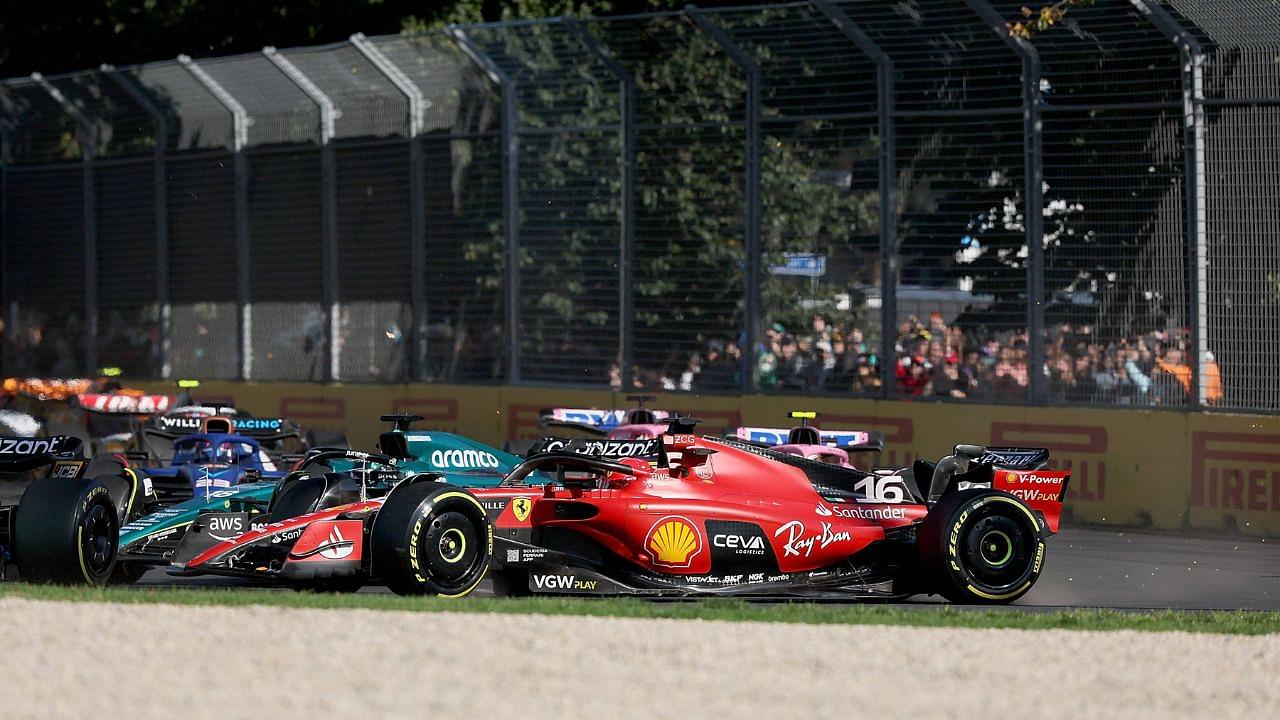As per the latest development, F1 has agreed to allow teams to use four power units instead of three for the 2023 Season. The change arrives just before the Azerbaijan Grand Prix in Baku gets underway.
The agreement was made after a commission meeting with all the teams. The midway-through-the-season change will be a much-needed relief for the drivers who are already on their second ICE just after three races this season and can avoid engine penalties at least once.
Article Contents
1. What is PU?
2. What is the Engine penalty?
3. When was the first Engine penalty introduced?
4. Why do teams need multiple PU elements in a season?
5. What’s the new change?
What’s PU?
The PU or Power Unit is the most important part of an F1 car. In simpler words, the Power Unit runs the car and is regarded as the heart of an F1 car, as per F1.
The Power Unit comprises six different elements. They are Internal Combustion Engine or ICE, Turbocharger, Motor Generator Unit-Kinetic or MGU K, Motor Generator Unit-Heat or MGU H, Energy Store, Control Electronics, and Exhaust.
All these aforementioned elements are combined to form the Power Unit. The different combination makes different Power Unit modes that the drivers can use throughout the race and in qualifications.
What is an Engine penalty?
Throughout the season, the teams are allowed to use not more than three ICEs, three MGU-Ks, MGU-Hs, three Turbochargers, two Control Electronics, two Energy Stores, and Eight Exhausts.
Anything beyond this is regarded as an infringement of the rule and can attract penalties for the team. This is known as an Engine penalty and drivers are pushed down the grid when they make changes beyond the allowed components.
When was the first Engine penalty introduced?
The rules regarding the Engine have been changing over time, and so is the Engine penalties. To begin with, there were no limitations to the engine till 2003. From 2004, the sport has started to limit one engine per race weekend, as per Onestopracing.
A year later in 2005, the governing body instructed the teams that they can use one engine in two race weekends. The concept of the number of engines that could be used began in 2009.
This was the time when the teams were allowed to have as many as eight engines throughout the season. However, it was 2014 when the final change was brought in until 2023. In 2014, the teams were instructed to use three Engines or Engine components.
Anything beyond that will incur penalties. They may be five places, ten places, 15 places, or at the back of the grid penalties. Admittedly, all of these years, the races were between 19-22 which was fine for that number.
Why do teams need multiple PUs in a season and why there’s a limit?
The F1 teams use different engines in order to stay ahead in the competition. The engines the teams use to start the season has major differences from the engine they end their season.
With development going on throughout the season, the teams develop the best engines possible. For this the teams at times incur penalties, but that’s a must if they need to stay in the competition.
The FIA in association with F1 has introduced the Engine cap in order to accommodate smaller teams to compete with the bigger ones. Now with the budget cap in place, it further helps the team who can spend the season with fewer amount of engines and use the money elsewhere.
What’s the new change?
As the 2023 F1 season got underway, teams took time to understand that it was a marathon of a season. The sport will have, for the first time, 23 races in a calendar year, and will help multiple drivers, according to Racingnews365.
Running one extra race, along with three sprint races, three sprint shootouts, one extra qualification, and all in all just more than one race weekend. The teams considered all of these and have concluded to use one more Engine component.
As the change was approved, the teams and drivers can now use one extra MGU-K, MGU-H, Turbocharger, and ICE. This will help the drivers such as Nyck de Vries, Valtteri Bottas, Zhou Guanyu, Kevin Magnussen, and Nico Hulkenberg.







